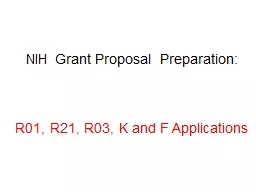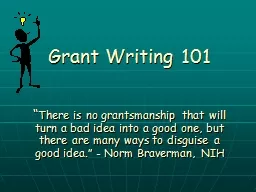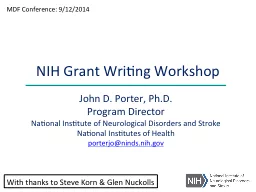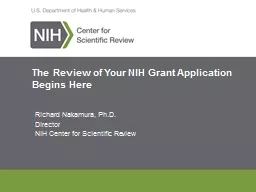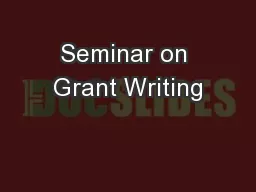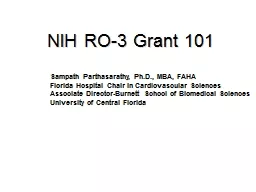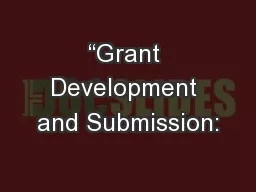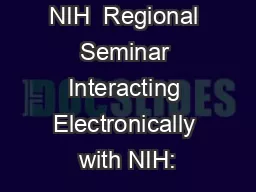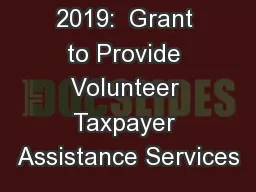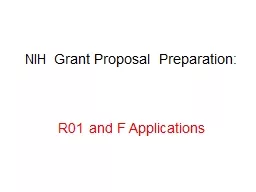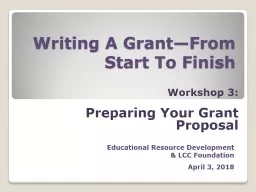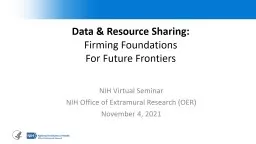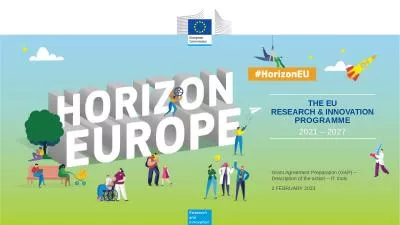PPT-NIH Grant Proposal Preparation:
Author : olivia-moreira | Published Date : 2018-07-12
R01 R21 R03 K and F Applications Where To Begin General Instructions Preparing an NIH grant application is a complex and lengthy process Some of these steps will
Presentation Embed Code
Download Presentation
Download Presentation The PPT/PDF document "NIH Grant Proposal Preparation:" is the property of its rightful owner. Permission is granted to download and print the materials on this website for personal, non-commercial use only, and to display it on your personal computer provided you do not modify the materials and that you retain all copyright notices contained in the materials. By downloading content from our website, you accept the terms of this agreement.
NIH Grant Proposal Preparation:: Transcript
Download Rules Of Document
"NIH Grant Proposal Preparation:"The content belongs to its owner. You may download and print it for personal use, without modification, and keep all copyright notices. By downloading, you agree to these terms.
Related Documents

